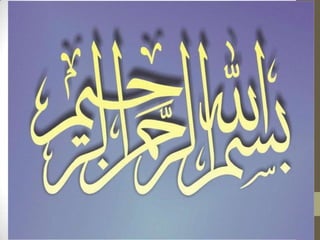
Active movements
- 3. Topics • Type of movements 1. Free exercises 2. Assisted exercises 3. Assisted-resisted exercises 4. Resisted exercises 5. Involuntary movements • Classification of exercises • Technique of exercises • Effect and uses of exercises
- 4. Voluntary movements • Movement performed or controlled by voluntary action of muscle, working in opposition to external force.
- 5. Classification These are classified as • Free • Assisted • Assisted-resisted • Resisted
- 6. • FREE EXERCISES work is performed only against gravity • ASSISTED EXERCISES When muscle strength or coordination is inadequate to perform the movement an external force is applied to compensate the deficiency • ASSISTED RESISTED EXERCISES At one point strength is high at the other muscle is weak • RESISTED EXERCISES Force of resistance is offered to the action of working muscle resistance may b mechanical or it may be manual
- 7. Free exercise Exercises performed by patients own muscular efforts with out any assistance or resistance against gravity. Free exercises can induce o Relaxation because of rhythmical or pendular nature of exercise o Muscle tone maintenance o Coordination by natural pattern o Confidence to perform and control movement
- 8. Advantage • Free exercises help to cure or mean of cure for the patient • Patient can master the technique once performed • Free exercises has great role in rehabilitation
- 9. Disadvantages • Insufficient demand on Neuro Muscular System NMS • Patient with brain damage or muscle paralysis can't cooperate
- 10. Classification of free exercises Classified according to extent of era into two • Localized Produce some specific or local effect e.g. for particular joint or muscle, flexion of elbow joint • General Use of many joints e.g. walking running
- 11. General exercises They are further classified into two types • Subjective exercises These are formal or general anatomical movements performed in full range. • Objective exercises Patients attention is required for particular aim or there is presence of goal i.e standing, arm stretching upward
- 12. Techniques of free exercises 1. STARTING POSITION 2. Instruction to patient-----this will help to gain the interest and cooperation of the patient 3. Speed of exercises ----- it depend upon the effect required. Usually it is slow in the period of learning later on it is according to patients natural rhythm 4. Duration--- it depend on patients capacity. Usually three bouts with rest interval so as to avoid fatigue.
- 13. EFFECT AND USES It depend upon 4 factors 1. Nature of exercise 2. Extent of exercise 3. Intensity of exercise 4. Duration
- 14. Effect and uses • RELAXATION: Rhythmical swing and pendular movements help in relaxation of hypertonic muscles. Reciprocal inhibition help in relaxation of opposing muscles i.e. scapular retractors and shoulder extensors movement help to relax Pectoral muscles. • JOINT MOBILITY: normal range of motion is maintained by full ROM. When movement is limited rhythmical swinging exercises plus over pressure at the end of free range increase the range.
- 15. MUSCLE POWER AND TIME • Power and endurance is build up by increasing response to tension. • Tension is greater when performed at a speed greater on lesser then normal. • Normally muscle power is maintained in every day activity in middle range.
- 16. • NEUROMUSCULAR COORDINATION: it is improved by repetition of exercises. Activities that require concentration or much effort become easy with the passage of time i.e. playing piano • COFIDENCE: achievement of coordinated and effective movement give confidence to the patient. Objective exercises are used for this purpose.
- 17. Circulatoryand Respiratorycooperation During prolonged and vigorous exercises • speed and depth of respiration increase • Heart beat is faster and more forceful • Heat is produced This include following changes a) The need of active tissue b) Preparation for activity c) Local circulatory changes in muscle d) Regulation of circulatory and respiratory function during exercise
- 18. A. NEED OF ACTIVE TISSUE: free supply of oxygenated blood and removal of metabolites is required for activity. B. PREPARATION FOR ACTIVITY: cerebral cortex, respiratory, cardiac and vasomotor centers i.e. part of ANS cause release of ADRENALINE in the blood stream. This result in • increase frequency of heart beat • Rise in arterial blood pressure these are effect of just anticipation of exercise as those who have participated in sports A. LOCAL CIRCULATORY CHANGES: in this capillary dilation in the muscle occur and permeability increase lead to increase in muscle blood capacity, interchange of fluid.
- 19. Regulation of circulatory and respiratory function • Venous return to heart increase • Increase in cardiac output Both these happen due to pressure variation in the abdominal and thoracic cavities resulting from increased respiratory movement Muscular contraction result in increased • Carbon dioxide • Temperature of blood
- 20. So overall effect of active exercises is Increase respiration Increase local and general circulation Provide work for heart muscles
